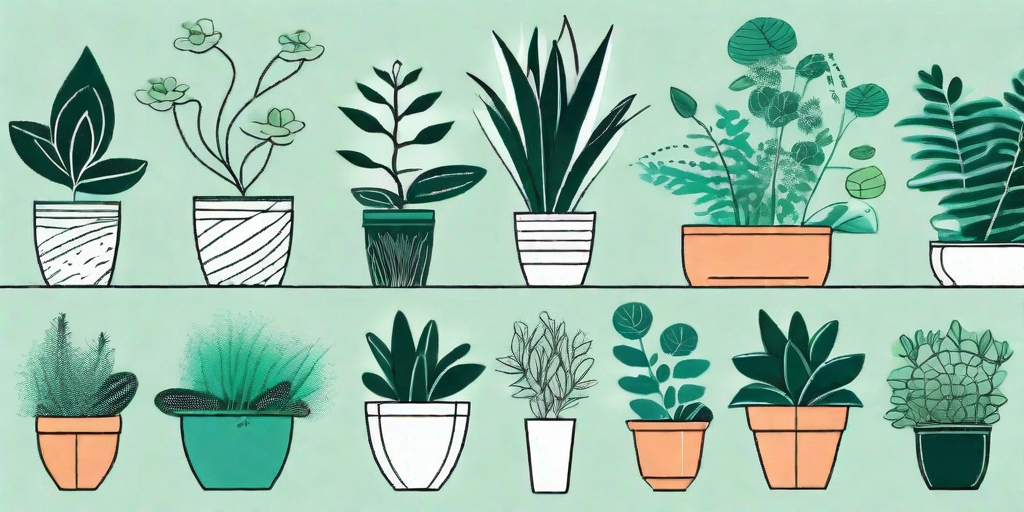
Propagation, the process of creating new plants from existing ones, is a bit like magic. With just a leaf, you can conjure up a whole new plant. It's like having a green thumb, but without the mess of soil and seeds. But how does one go about this botanical wizardry? Well, dear reader, buckle up your garden gloves and prepare to delve into the captivating world of plant propagation.
The Basics of Plant Propagation
What is Plant Propagation?
Plant propagation is the process of creating new plants. There are two main types of propagation: sexual and asexual. Sexual propagation involves the union of the pollen (male) with the egg (female) to produce a seed. The seed then produces a new plant. Asexual propagation, also known as vegetative propagation, involves taking a part of a parent plant and causing it to regenerate into a new plant. This is the method we'll be focusing on, specifically leaf cutting propagation.
Leaf cutting propagation is a method of asexual propagation where a leaf or a part of a leaf is used to generate a new plant. This method is commonly used for houseplants, such as succulents and African violets. It's a simple and cost-effective way to expand your plant collection or to share your favorite plants with friends and family.
Why Propagate Plants?
Propagation is not just a fun hobby for plant enthusiasts, it also has practical benefits. For one, it's a cost-effective way to increase your plant collection. Instead of buying new plants, you can create new ones from the plants you already have. It's like having a plant factory at your fingertips. Plus, it's a great way to share your favorite plants with others. A propagated plant makes a thoughtful and personal gift for any occasion.
Propagation can also help preserve the genetic diversity of plants. By propagating a plant, you are creating a genetic clone of the parent plant. This can be particularly useful for preserving rare or endangered plants. So, by propagating your plants, you're not just a gardener, you're a conservationist too!
How to Propagate Plants with Leaf Cuttings
Step 1: Choose the Right Plant
Not all plants can be propagated from leaf cuttings. Some plants, such as succulents and African violets, are perfect candidates for leaf cutting propagation. Other plants, like most trees and shrubs, are better suited for other methods of propagation. So, before you start snipping away, make sure your plant is suitable for leaf cutting propagation.
How do you know if your plant is suitable? Well, a quick internet search should do the trick. Or, you can consult a plant propagation book or your local nursery. Remember, when it comes to plant propagation, knowledge is power!
Step 2: Take a Leaf Cutting
Once you've identified a suitable plant, it's time to take a leaf cutting. Using a sharp, clean knife or scissors, cut a leaf from the plant. If possible, try to include a bit of the stem with the leaf. This is where new roots will form.
After taking the cutting, let it dry out for a day or two. This allows the cut to heal and helps prevent disease. Once the cutting has dried, it's ready to be planted.
Step 3: Plant the Leaf Cutting
Plant the leaf cutting in a pot filled with a well-draining potting mix. The cutting should be planted upright, with the cut end buried in the soil. Water the cutting lightly and place it in a warm, bright location. Avoid direct sunlight as it can cause the leaf to dry out and die.
Patience is key when it comes to leaf cutting propagation. It can take several weeks or even months for roots to form. During this time, keep the soil lightly moist and avoid overwatering. With time and care, your leaf cutting should develop roots and eventually grow into a new plant.
FAQs
- Can all plants be propagated from leaf cuttings?
- No, not all plants can be propagated from leaf cuttings. Some plants, such as succulents and African violets, are well-suited for leaf cutting propagation. Others, like most trees and shrubs, are better suited for other methods of propagation.
- How long does it take for a leaf cutting to root?
- It can take several weeks or even months for a leaf cutting to root. Patience is key when it comes to leaf cutting propagation.
- Do I need to use a rooting hormone?
- While not necessary, a rooting hormone can help speed up the rooting process. It can be particularly helpful for plants that are difficult to propagate.
Common Mistakes to Avoid
- Using a dull or dirty cutting tool. This can damage the plant and introduce disease.
- Overwatering the cutting. This can cause the cutting to rot before it has a chance to root.
- Planting the cutting in the wrong orientation. The cut end of the leaf should be buried in the soil.
- Not giving the cutting enough light. While direct sunlight can be harmful, the cutting still needs plenty of bright, indirect light.
So there you have it, the ins and outs of plant propagation with leaf cuttings. With a little patience and care, you can turn a single leaf into a whole new plant. So why not give it a try? After all, who doesn't love a bit of botanical magic?















